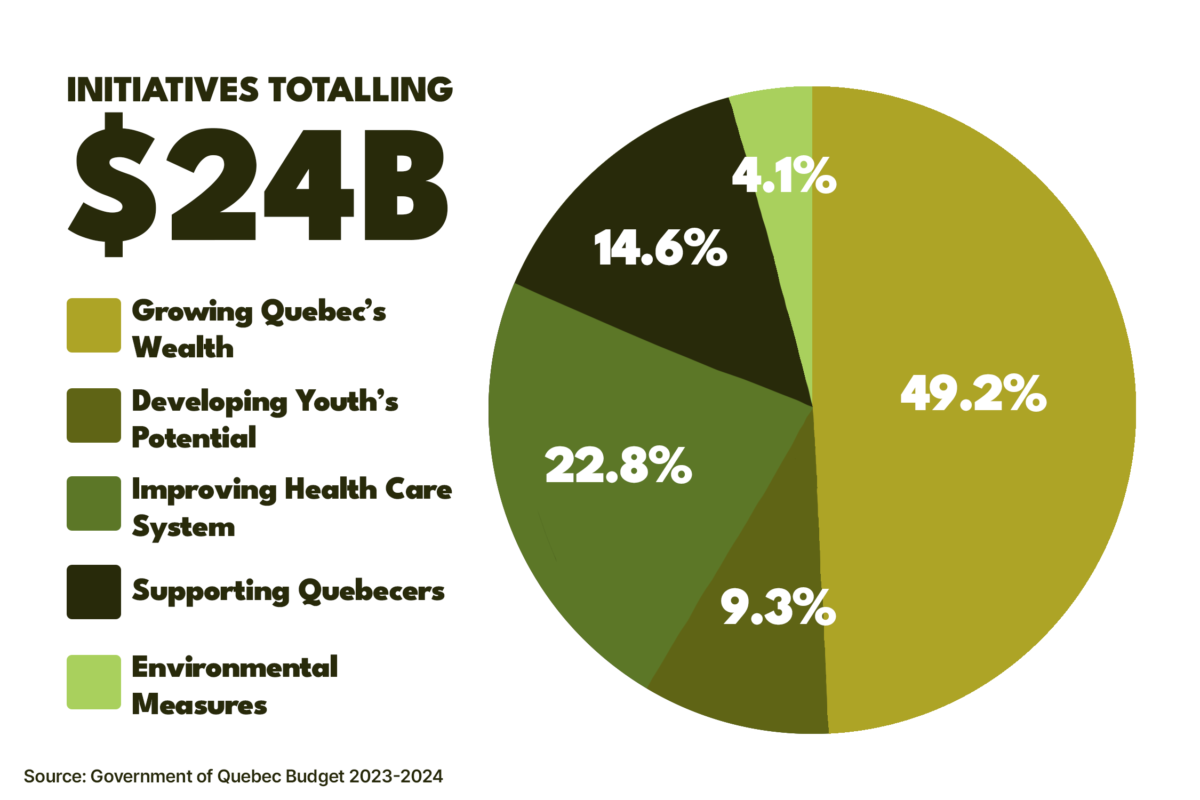Economics analyst Moshe Lander shares his observations from the budget data
The new Quebec Budget for 2023-24, presented by Minister of Finance Eric Girard, lays out several supporting plans for taxation, the health-care system, youth, education, and business budgets.
Educational spending has risen by six per cent this year, for a total of approximately $20 billion. In terms of higher education, the two biggest expenses are faculties and facilities. However, specific details as to where funding is going remains unclear at this time.
According to Moshe Lander, senior lecturer of economics at Concordia, “More money on education isn’t necessarily a good thing. It could be, but it depends. It’s merely a promise that this year we will spend this money on education, but stay tuned for the details.”
In addition to increases in the educational budget, $888 million over five years has been allocated to business productivity and encouraging business innovation. This demonstrates the possibility that students entering the job market will find more employment opportunities when they graduate. People looking to start their own businesses would also receive more funding from the government.
“The traditional industry that they might go into might not be as popular as when they graduated. Innovations might change the nature of those industries,” Lander said.
Lander thinks the province’s aging population and voter turnout could influence budget spending.
“Young people don’t get a lot of money from the government because they don’t vote,” said Lander. “But old people do.”
As the highest-taxed province in Canada, Quebec’s government reduced taxes by one per cent in this year’s budget, which will result in $9.2 billion of lost revenue for the government.
Lander agrees with the government cutting, “It (tax cuts) is a good sign, it’s small, but it’s better than nothing,” he said. But at the same time, he is concerned about balancing the budget.
“You’re going to dramatically cut spending and there’s a whole bunch of things that you have to stop spending more,” said Lander.
This year’s budget will lay the foundation for the government’s initiatives over the next four years. Lander pointed out that it’s unclear whether we’re heading into a recession, or whether we’ll avoid one.
“With that type of uncertainty, they’ll kind of wait and see what happens to decide how much they need to spend, ”he said.
